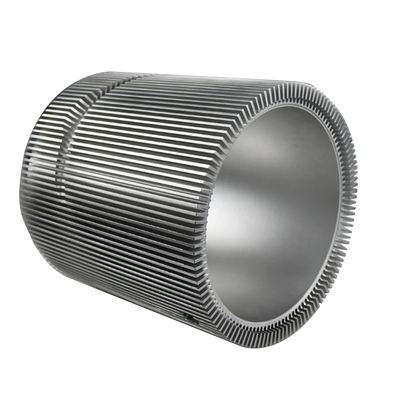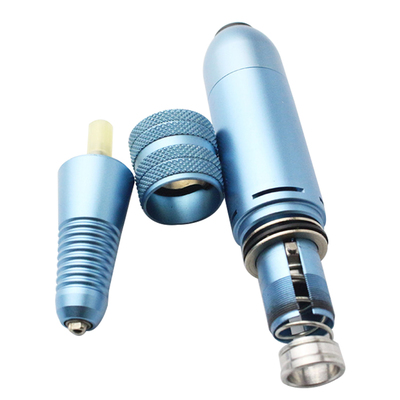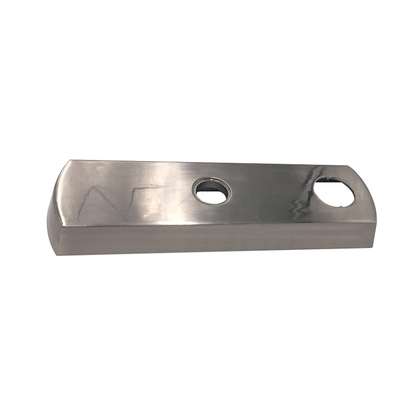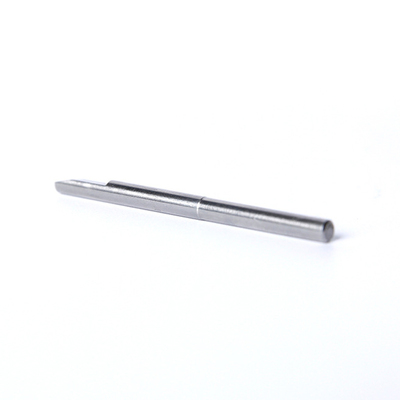Plastic processors should choose cooling systems in this way to improve product quality and profit margins
In an ideal world, the process cooling system can operate without any cost, and at the same time can work perfectly to keep the plastic process running smoothly and profitably. However, since there is no perfect world, the next best option is to strike an appropriate balance between planning methods and today's system technology to meet the cooling needs of operations cost-effectively.
The following are the best practices in the process cooling plan and the latest developments in technologies useful for plastic processors.
Beyond the basics
Whether in injection molding, blow molding or extrusion molding, the goal of process cooling is to establish a consistent and repeatable process. To this end, a rigorous, fact-based approach is needed to understand the cooling requirements and overall goals of the operation, such as the need to reduce operating costs, increase production, and increase profitability per part.
It is essential when evaluating process cooling systems for detailed evaluations that go far beyond basic heat transfer calculations and basic assumptions, such as coolant temperature as the main driver of productivity and profitability.
Successfully planning and specifying a suitable process cooling system means that a thorough documented evaluation of heat transfer load, pressure and flow rate, as well as coolant temperature requirements and energy consumption is required before making equipment decisions. It also requires a clear understanding of multiple variables related to manufacturing operations, such as the process involved and the geographic location of the factory.
Determine heat transfer load
The basic step in determining the process coolant is to determine the heat transfer load required to cool a given resin to be processed. The purpose is to remove the right amount of heat from the molten resin to allow it to solidify at an appropriate rate, thereby avoiding the possibility of part warpage and high scrap rate.
The heat transfer load is determined in part by using basic mathematical equations, which takes into account the type of plastic resin used and the total pounds of resin to be processed and cooled in a given time frame. This is a basic equation because different types of resins used in different plastic processes have different specific heat values and initial and final product temperatures:
Q(BTU/hr)=C p(BTU/lb-˚F)xΔT(˚F)xṀ(lb/hr), assuming
• The typical initial temperature and final product temperature of the specific resin used.
• The average specific heat (C p), which depends on the temperature.
• Due to changes in processing temperature (resin ΔT) and specific heat factor, the safety factor is 20-25%.
This equation calculates the amount of heat that must be removed from the product per hour. Specific heat is defined as the amount of heat removal required to reduce the temperature of a pound of matter by 1˚F. ΔT represents the initial and final product temperature, and Ṁ represents throughput. Divide the result by 12,000 to get a coefficient for tonnage of heat removal. Over the years, good guidelines have been established for most resins that can be used to quickly estimate the heat transfer rate required for each application (see the table below).
The final figure provides information that decision makers can use to determine the size of equipment (such as chillers) based on the rated cooling capacity (tons) of the equipment. However, selecting equipment based on this basic heat transfer equation alone is not enough to ensure proper cooling, because it does not take into account other key aspects of heat transfer, including coolant pressure and flow. Both are essential for optimizing the performance of heat exchangers (such as injection molds, blow molds, cooling rolls, etc.) used in the process.
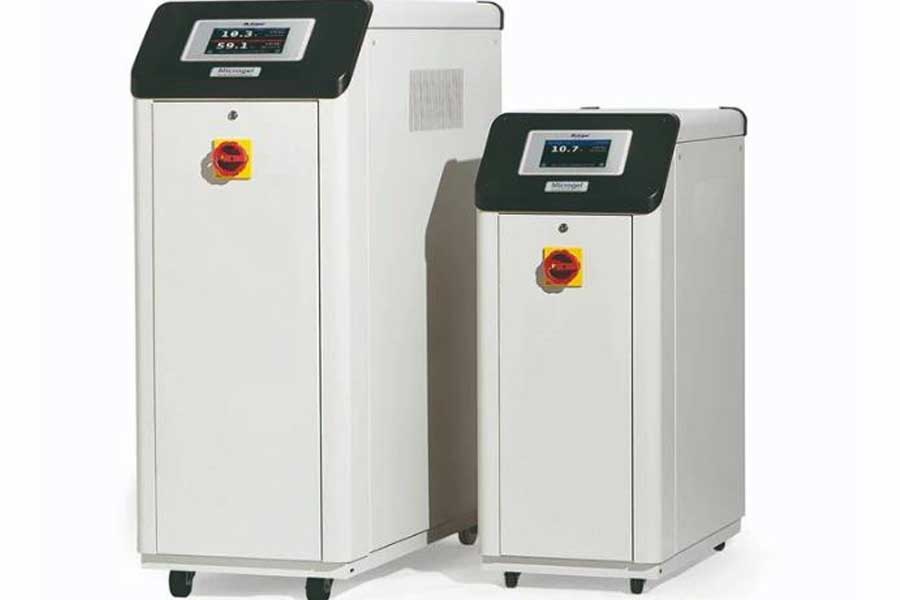
Determine the appropriate pressure and flow
To determine the appropriate pressure and turbulence, and to achieve the best coolant temperature, the heat exchanger must first be analyzed. Ensuring proper flow through the exchanger is an important part of the heat transfer process. Importantly, it affects the ability to shorten cycle time, repeatability, reduce waste and improve product quality.
For example, in injection molding, proper analysis should consider every aspect of each mold and mold half, including the size of the cooling channel, the number of cooling circuits, the number of series or parallel circuits, and the spacing of the cooling channels. In this case, the goal is to ensure that the coolant temperature ΔT passing through the mold is as low as possible. This requires proper pressure to allow the coolant to dissipate the required heat as it flows from one side of the mold to the other.
The goal of proper flow and therefore heat transfer should be to limit the temperature rise (ΔT) of the water passing through the mold to 2°F or less. In this way, even in a multi-cavity mold, uniform and effective cooling can be carried out in the entire cavity, and consistent part quality and quality can be maintained.
High turbulence is the way to achieve this. It is the function of analyzing heat exchange requirements, such as achieving high flow and minimizing the cooling load required for the coolant ΔT, pressure drop (ΔP) and pump pressure. It can also determine the correct pump selection and the highest possible cooling water temperature.
Since each injection mold is unique, as with most other heat exchangers (such as blow molds, cooling rolls, etc.), a more detailed analysis of the heat transfer load is critical.
Overall analysis of operations
Each plastic processor's operation is also unique, so it is necessary to conduct a technical evaluation of the equipment and process before determining the best configuration and process cooling technology. There are many variables to consider.
For example, a typical blow molding operation may need to cool the entire factory process at one temperature, while the injection molding equipment may have 50 injection molding machines. Each mold requires a different temperature, flow, and pressure. In fact, each Mold half. The central cooler is sometimes suitable for blow molding operations because it provides cooling water at a temperature. However, an integrated system that uses a central adiabatic cooler in combination with a machine-side combined cooler/temperature control unit (TCU) will be most suitable for injection molding operations because it provides the much-needed precise temperature control, high pressure and high flow rate for individual molds and half molds .
Other factors also influence the choice of process cooling technology, such as the total water consumption of the plant. For example, some factories may choose closed-loop adiabatic central coolers instead of open cooling towers to significantly reduce water consumption.
Another important consideration is energy consumption. If the plant aims to reduce energy consumption, it can choose an insulated central fluid cooler with machine-side coolers dedicated to each process. This configuration can help reduce energy consumption because the adiabatic cooler uses ambient air to cool the process water when conditions permit, while turning off the machine-side cooler. The possibility of this "free cooling" opportunity depends on a number of variables, including the geographic location of the power plant and the coolant temperature to be maintained.
Whether it is reducing water consumption, reducing energy consumption or other operational-related goals, proper planning methodology will put the plant on the right path to select the appropriate process cooling solution.
Evaluation technology
As important as the method of planning and designing the system is the need to evaluate the cooling technology itself, especially since many advances have been developed in recent years to provide equipment that has more than just a "calculation" function.
At the top are controls for monitoring and optimizing the overall performance of the system, as well as individual components such as the central cooler and the machine-side cooler/TCU.
The main controller on today's integrated system is designed to automatically optimize the system, while having the ability to monitor, collect and evaluate data for each cooling system component. The control technology used on each system component has also been developed. An example is the ability to record and monitor the energy consumption of individual coolers/TCUs. Doing so allows the processor to measure the kW cost/pound of the plastic used for process cooling and consider the cost to increase profit.
Proper pressure and flow have also promoted the continuous development of machine-side coolers equipped with high-flow pumps to achieve proper pressure and turbulence on various heat exchangers (molds, rolls, etc.) to ensure part quality and reduce waste.
Continuous maintenance also affects the choice of equipment. For example, a closed loop central adiabatic cooler is different from a cooling tower that uses an evaporation process. Instead, the central adiabatic cooler pumps the water returned in the process to the fin-tube heat exchanger and cools it with the surrounding air flow. Under high ambient temperature conditions in an adiabatic room, some systems pulse a fine mist of water into the incoming airflow. The mist evaporates instantly, cooling the air before it hits the cooling coil that carries the process water. This process actually eliminates heat exchanger fouling and other maintenance-related issues found in open evaporative cooling systems.
Another technology must be adapted to business growth. Fortunately, the development of a modular process cooling system allows the processor to easily expand when additional cooling capacity is needed (rather than before), thus saving money.
Link to this article:
Reprint Statement: If there are no special instructions, all articles on this site are original. Please indicate the source for reprinting:https://www.cncmachiningptj.com/,thanks!
 3, 4 and 5-axis precision CNC machining services for aluminum machining, beryllium, carbon steel, magnesium, titanium machining, Inconel, platinum, superalloy, acetal, polycarbonate, fiberglass, graphite and wood. Capable of machining parts up to 98 in. turning dia. and +/-0.001 in. straightness tolerance. Processes include milling, turning, drilling, boring, threading, tapping, forming, knurling, counterboring, countersinking, reaming and laser cutting. Secondary services such as assembly, centerless grinding, heat treating, plating and welding. Prototype and low to high volume production offered with maximum 50,000 units. Suitable for fluid power, pneumatics, hydraulics and valve applications. Serves the aerospace, aircraft, military, medical and defense industries.PTJ will strategize with you to provide the most cost-effective services to help you reach your target,Welcome to Contact us ( [email protected] ) directly for your new project.
3, 4 and 5-axis precision CNC machining services for aluminum machining, beryllium, carbon steel, magnesium, titanium machining, Inconel, platinum, superalloy, acetal, polycarbonate, fiberglass, graphite and wood. Capable of machining parts up to 98 in. turning dia. and +/-0.001 in. straightness tolerance. Processes include milling, turning, drilling, boring, threading, tapping, forming, knurling, counterboring, countersinking, reaming and laser cutting. Secondary services such as assembly, centerless grinding, heat treating, plating and welding. Prototype and low to high volume production offered with maximum 50,000 units. Suitable for fluid power, pneumatics, hydraulics and valve applications. Serves the aerospace, aircraft, military, medical and defense industries.PTJ will strategize with you to provide the most cost-effective services to help you reach your target,Welcome to Contact us ( [email protected] ) directly for your new project.

- 5 Axis Machining
- Cnc Milling
- Cnc Turning
- Machining Industries
- Machining Process
- Surface Treatment
- Metal Machining
- Plastic Machining
- Powder Metallurgy Mold
- Die Casting
- Parts Gallery
- Auto Metal Parts
- Machinery Parts
- LED Heatsink
- Building Parts
- Mobile Parts
- Medical Parts
- Electronic Parts
- Tailored Machining
- Bicycle Parts
- Aluminum Machining
- Titanium Machining
- Stainless Steel Machining
- Copper Machining
- Brass Machining
- Super Alloy Machining
- Peek Machining
- UHMW Machining
- Unilate Machining
- PA6 Machining
- PPS Machining
- Teflon Machining
- Inconel Machining
- Tool Steel Machining
- More Material

